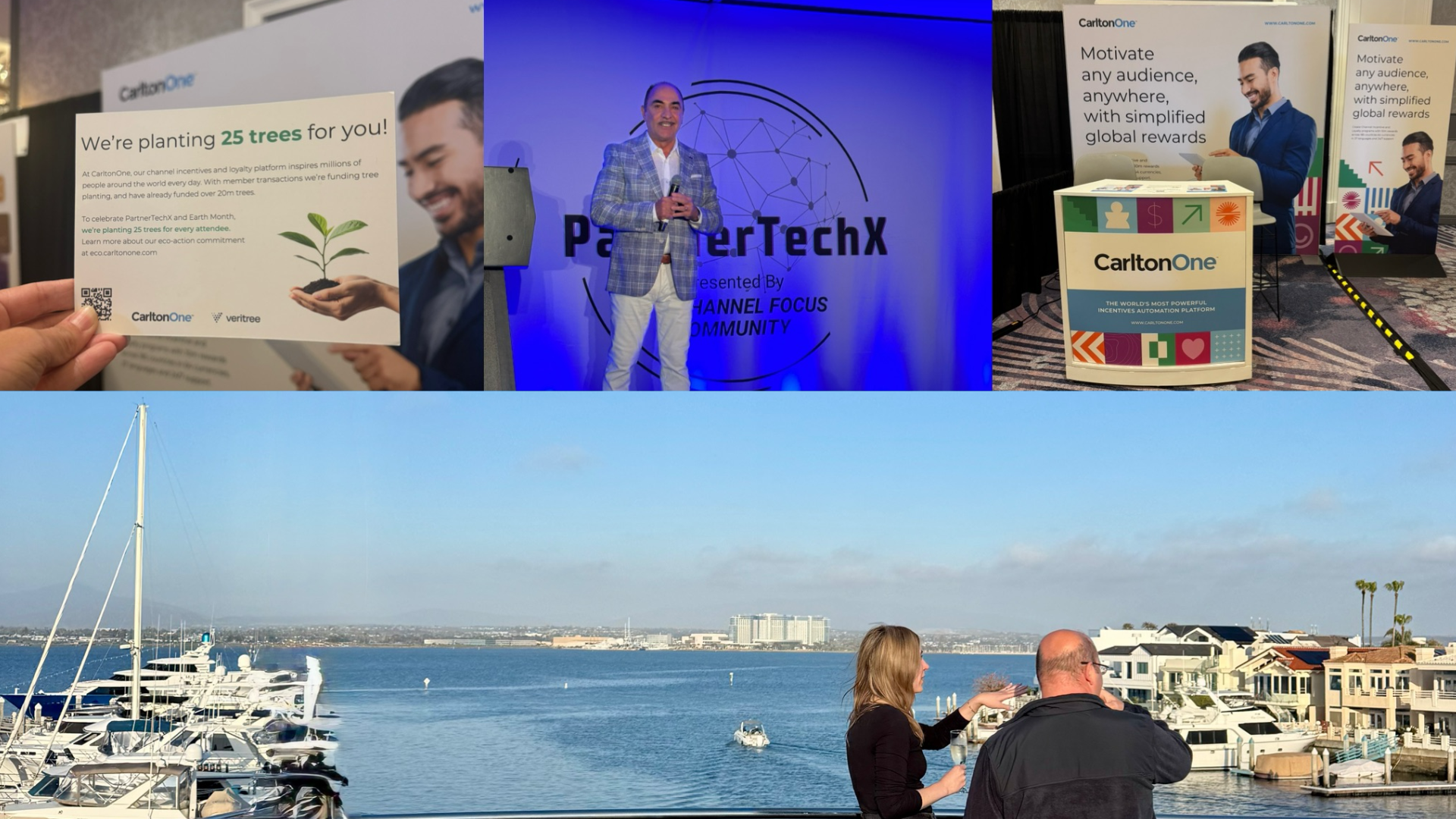Mastering Points-Based Channel Rewards for Success
Driving Desired Behavior Through Points-Based Channel Rewards
Mastering Points-Based Rewards for Success
In today’s rapidly evolving digital channel landscape, traditional methods are giving way to innovative technological processes driven by the transition towards an ecosystem economy, the advancements in artificial intelligence, the widespread adoption of cloud computing, and the new millennial B2B buyer’s journey. B2B buying is changing, and so is the psychology, behavior, and journey. The new millennial buyer is digital-first, friendly to subscription/consumption models, and in 75% of the cases does not want to talk to a salesperson. In response to these challenges, vendors and their channel partners are turning to innovative approaches, one of which is the utilization of points-based rewards across the partner lifecycle to drive alignment to this new millennial buyer’s journey, as well as promote partner-to-partner (P2P) collaboration and co-selling by/and/with the vendors channel teams.
As digital technology sweeps across industries, the transformation of channel partner businesses demands new skill sets and a willingness to adapt and evolve. It also exposes the misalignment between partner sales processes and the digitally connected millennial buyer’s journey. Not surprisingly, research by Forrester revealed that a mere 12% of channel partners have adapted their sales processes to harmonize with this new digitally connected buyer.
A Holistic Approach to Incentives
In a well architected program, both content and rewardable behaviors/activities vary by some combination of persona (sales rep, sales engineer, marketing associate, etc.), also by channel segment (based on partner type, and GTM model), and by geography. This helps you tailor your incentive strategy and focus your spending. Points-based incentive programs have a track record of success in channel engagements and are most effective when viewed as part of a comprehensive incentive strategy aimed at enhancing partner performance. In today’s digital landscape, achieving transformation in alignment to the buyers’ journey together with P2P collaboration and co-selling requires a multifaceted approach that combines individual, team, and company-level rewards.
Start by identifying your buyer’s journey, then introduce your partners to the concepts of demand type, stages of the buyer’s journey, and how to align solution messaging with demand type. Focus your training on helping partners evaluate the demand type and buyer journey for specific audience and offerings so that they can start the conversation with the buyers. Once that is done, it’s all about delivering the right content at the right stage of the buyer’s journey.
You should also evaluate the sales cycle of the partners themselves, and identify what skills are needed to onboard new partners and shorten their time to revenue, as well as understanding the lifecycle of a given transaction, from demand creation to sales closing and renewals. These considerations will yield the skills and behaviors needed to align your incentives to your partner sales cycle, so you can influence those behaviors with incentives and different types of incentive programs, which will help you align the buyer’s and partner journeys.
Visualizing the new buyer’s journey and comparing it to the partners sales cycle is essential to achieve success. It emphasizes the importance of rewarding behaviors and actions at various stages of the sales cycle, from demand generation to lead management to opportunity management. A successful partner sales process needs to move away from a process designed around sales activities, to one that aligns with the buyer’s position in the buying process.
If we view the partner sales cycle, it’s changed from transactional, into one that requires prospects to be nurtured for months or years before they turn into sales opportunities. It is critical to educate partners about how to connect with each buyer at each phase of the journey. Behavioral incentives can make the difference in helping partners modify their behavior and start using proven techniques and methodologies designed around the buyer’s journey.
Optimizing Points and Budget Allocation
To make the most of points-based rewards, careful consideration of the right incentive value and allocation to the correct partner persona at the right time is necessary. A successful program hinges on the right incentive value, applied with the right benchmark incentive rate, at the right time during the selling process. Balancing these factors ensures that rewards drive the desired behaviors while maintaining a favorable return on investment.
The challenge is to find the right level of investment between programs to optimize the sales and marketing performance of your indirect partners (effectiveness) without overspending (efficiency). Thus, most channel marketers must answer these questions: “How can I best allocate my budget across the various programs?” And, “Which programs are going to give me the most returns with the least level of investment?”
Knowing where to invest begins with an understanding of the specific behaviors you want to influence within your channel. When deciding which behaviors are important to you, and therefore where to invest, you should consider:
- The lifecycle of the partners themselves (what skills are needed to onboard new partners to shorten their time to revenue)
- The lifecycle of a given transaction (demand generation, lead management, opportunity management, and sales closing skills required)
Keep in mind that past performance is not an indicator of future growth – suppliers must look beyond sales SPIFs and develop incentives that drive future performance. Changing factors – such as new routes to market, emerging partner types and new technology offerings – are altering the way incentives are created and executed.
This is about restructuring your incentive strategy to reward for a string of productive activities and behaviors, which when combined lead to the sale – and not just post-sales SPIFs. The fact is that channel partner incentives should be used to support and accelerate your partners sales cycle, as well as fast-tracking partners from becoming partner suspects, through to converting to active and productive partners. A handful of top performing vendors are bringing this strategy, ecosystem and partner experience to their channel- empowering them to transform themselves and engage with their partners in entirely new ways.
Personalization and Choice
Different partner types require different motivators, and incentives must align to the selected partner business model to achieve aligned success. Acknowledging that different partner personas have distinct needs and preferences is paramount. A successful points-based rewards program provides a varied earning and redemption options designed to drive the entire partner business towards those shared objectives with plenty of redemption options, catering to different tastes and values. From products to experiences and cash equivalents, the redemption options should offer choice and relevance across various partner types, partner personas, go-to-markets, and geographies around the globe.
Your Checklist to Mastering Points-based Channel Rewards Programs:
-
- To gain greater adoption, move to a behavioral incentive model. Channel incentives solely focus on past performance or closed deals don’t work any longer.
- Profile partners against your ideal partner profile to understand business model, go-to-market, sales coverage, marketing capabilities, value added positioning.
- Define the different personas within the partner organization. Executive team, sales and marketing team, product and support team all have different drivers.
- Segment partners by profile, persona, and go-to-market use launch MDF funds and programs to accelerate time to revenue.
- Align partner incentives to the partner and buyer journey by partner type to accelerate growth: Recruitment and onboarding, enablement, demand generation.
- Define incentive types, programs, and personas to drive desired behaviors at the partner company, team, and individual level.
- Model, track, measure and tune activities, behaviors, and transactions; programmatic, behavioral, and financial program measurement.
Embracing the Journey Ahead
As the digital landscape continues to evolve, businesses must adopt a forward-thinking approach to channel engagement. Points-based rewards offer a powerful tool to align sales processes with the digital buyer’s journey, fostering partner loyalty and driving digital transformation. By embracing a holistic view of incentives, vendors can tap into the potential of each partner persona, motivating them to take meaningful actions that contribute to the success of the business.
So, are you ready to embark on a journey to the ecosystem economy powered by points-based rewards? The time is now to reshape your approach, realign your incentives, and cultivate lasting partner relationships in the digital age. Let’s collaborate to drive your ecosystem performance and elevate your partner engagement to new heights. Talk to us and learn the many ways we can help!
Share this
You May Also Like

Optimizing Channel Rebates for Success!

Aligning Partner Sales Processes with the Digital Buyer’s Journey
